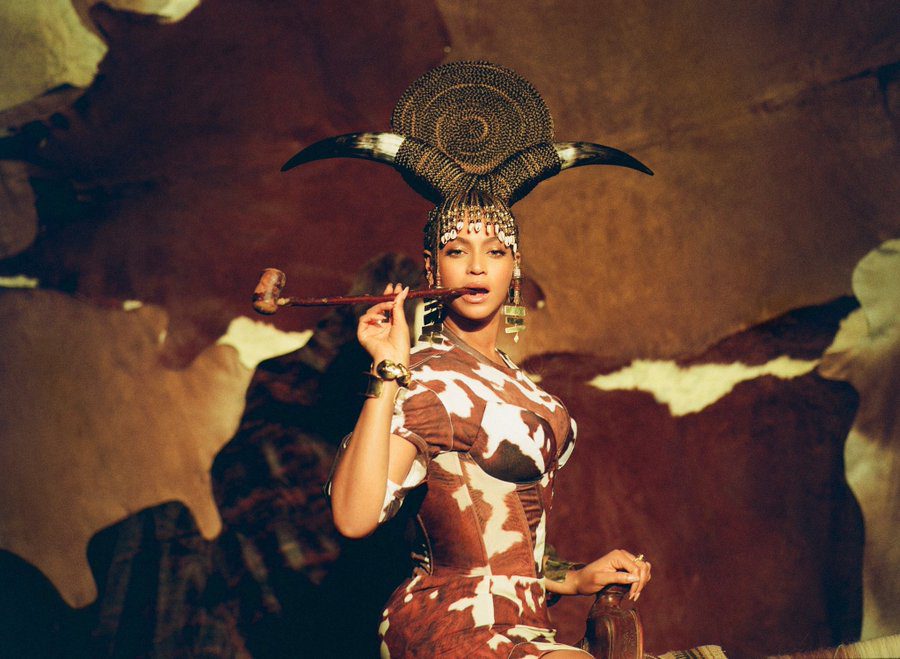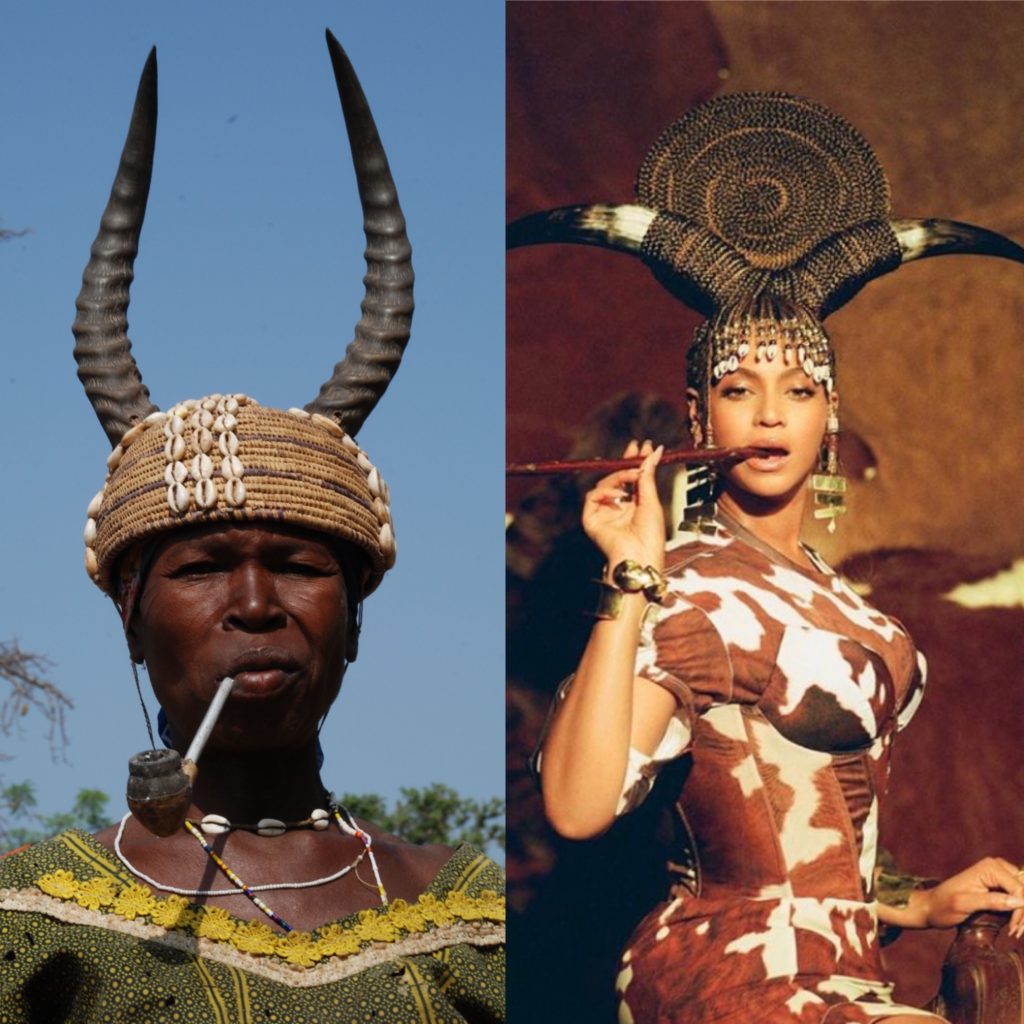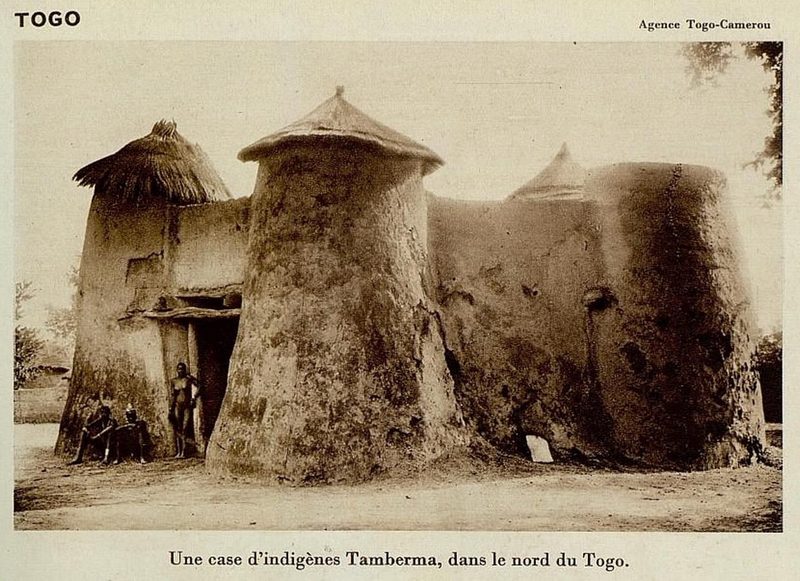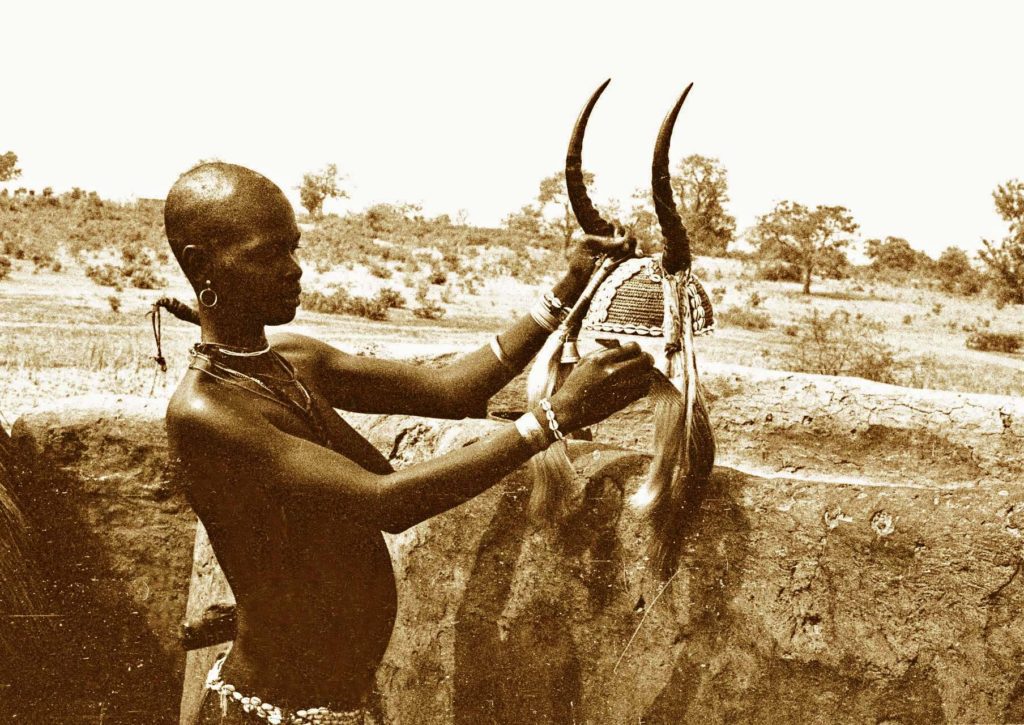I was watching Beyoncé’s ‘Black Is King’ when this particular scene of Beyoncé wearing a horned headdress with a long pipe in hand stood out to me. The picture contains other references and symbols but two, particularly, caught my eye: the horns and the pipe.


Both reminded me of this photo of a Batammariba woman holding a pipe.

Batammariba women from the besoobe clan wear a cowrie-decorated headdress adorned with antelope horns. Young women wear this traditional headdress during initiation rites, and married women also wear it. Antelope horns are an essential feature of Batammariba’s spiritual life because they are believed to be the repository of one’s ancestral or lost loved ones’ spirits. Girls wear the horned headdress during initiation rites, at funerals, and the horns also make an appearance at the entrance of their homes.
The Batammariba live in the Koutammakou area, located in the North-Eastern part of Togo bordering on Benin. They are famous for their Takyenta: fortified houses that date back to the 17th century when they took refuge in this area to escape slave raiders. Later, the Takyenta became grounds of resistance to the German colonizers in their quest to form Togoland.

The Batammariba speak Ditammari, and oral tradition maintains that their real name is otam-mari, which signifies “the real architect of the earth.” The plural of Otam-mari is Batam-maaba.
The Batammariba are also known as Tamberma, a name historically used by their Tem neighbors. During the German colonial era, German colonial officers adopted Tamberma as a designation for all Batammariba.
In Benin, where they are known as Somba, they occupy the Atakora mountain range of northwestern Benin and share a border with their Gur relatives in neighboring Burkina Faso.

References
Padenou, Guy-Hermann, and Pastor-Barrué Monique. 2006. Architecture, société et paysage Bétammaribé au Togo: contribution à l’anthropologie de l’habitat. Presses universitaires du Mirail.
Blier, Suzanne Preston. “The Dance of Death: Notes on the Architecture and Staging of Tamberma Funeral Performances.” RES: Anthropology and Aesthetics, no. 2 (1981): 107-43